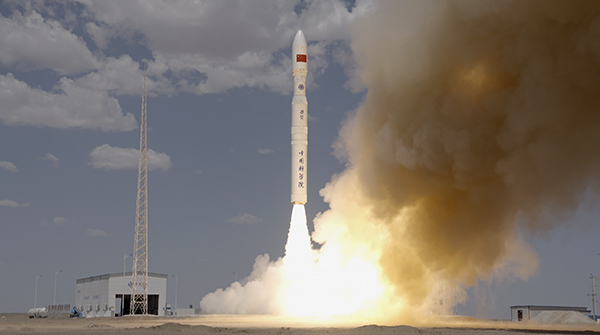The first anniversary of the launch of the EP Pathfinder LEIA
It has been one year since the launch and operation of the EP Pathfinder LEIA (Lobster Eye Imager for Astronomy). In the test observations of LEIA, the team successfully obtained and publicly released the truly wide-field X-ray images of celestial objects, for the first time ever, by a focusing imaging telescope built from lobster eye micro-pore optics (MPO). In the past one year, LEIA has accomplished its primary goals, which are the in-orbit performance validation of the MPO and detector technologies, and the study of in-orbit calibration procedure for wide-field X-ray focusing telescopes. Moreover, since 2022 November, LEIA has started to provide data for sky monitoring in the soft X-ray band. Albeit the limited observable time of about 10 minutes per orbit due to its largely passages over high particle background regions, LEIA has achieved some interesting results, with some examples mentioned in below.
On 7 November 2022, LEIA discovered its first X-ray transient, LXT221107A, which led to the follow-up observations by Swift/XRT and NICER. The source was later confirmed to be a super-flare from the star HD 251108, whose luminosity and duration were among the most extraordinary ones of stellar flares observed so far. On March 7 2023, LEIA detected the prompt emission of the second brightest gamma-ray burst, GRB 230307A. The observation provides key observational evidence for studying the central engine of the burst. On 26 May 2023, LEIA captured the brightening of SAX J1747.0-2853 and X-ray variability of 1A 1742-294 in the Galactic Center region. With the angular resolution of ~5 arcmin, it can accurately determine the positions of the two sources. LEIA also detected outbursts and monitored X-ray variability of several neutron star or black hole X-ray binaries, both in our Galaxy and the Large Magellanic Cloud.
So far, LEIA has completed the first-round of soft X-ray all-sky mapping and detected a number of transient sources and bursts. Also, the in-orbit calibration tests and exploration of observing modes have accumulated valuable data and experience for the upcoming launch and operation of the Einstein Probe (EP) satellite.

Figure 1 Launch of LEIA and other payloads onboard SATech-01 satellite of the CAS on July 27, 2022

Figure 2 Image of LEIA detection of brightening of SAX J1747.0-2853 and variability of 1A 1742-294 in the Galactic Center region.